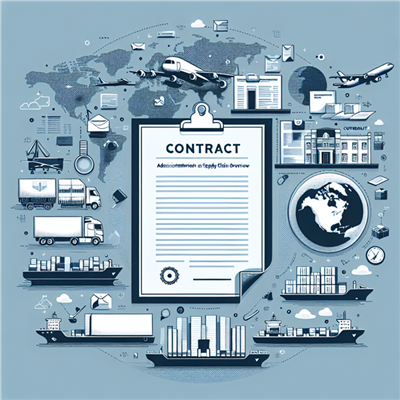
In today's highly competitive business environment, understanding the fundamentals of procurement and supply is crucial for achieving operational efficiency and reducing costs. Businesses with effective procurement and supply strategies are well-positioned to maximize their profitability and stay ahead of their competitors.
- Cost Savings: Efficient procurement and supply management can result in significant cost savings. By selecting the right suppliers, negotiating favorable terms, and managing relationships effectively, businesses can reduce their purchasing costs and improve their bottom line.
- Quality Control: Procurement and supply also play a critical role in maintaining quality control. Businesses can ensure that the goods and services they purchase meet their quality standards and requirements.
- Risk Management: Proper procurement and supply management can help mitigate risks associated with supplier performance, delivery delays, and cost overruns.
1. Supplier Selection: This involves identifying and evaluating potential suppliers based on factors like price, quality, reliability, and delivery times.
2. Contract Negotiation: This is the process of establishing the terms and conditions of the purchase, including price, delivery, and payment terms.
3. Purchase Order Management: This involves creating, issuing, and tracking purchase orders, which are formal documents sent to suppliers to order goods or services.
4. Inventory Management: This involves managing the stock of goods in a way that maximizes efficiency and minimizes waste and costs.
5. Supplier Relationship Management: This involves building and maintaining positive relationships with suppliers to ensure a steady supply of goods and services, and to negotiate better terms.
What is Procurement and Supply?
Procurement and supply is a critical business function that involves the process of selecting vendors, establishing payment terms, negotiating contracts, and buying goods and services needed for the organization's operations. The main objective of procurement is to acquire goods or services from external sources at the best possible cost, quality, and quantity.The Importance of Understanding Procurement and Supply
A comprehensive understanding of procurement and supply is vital for several reasons:- Cost Savings: Efficient procurement and supply management can result in significant cost savings. By selecting the right suppliers, negotiating favorable terms, and managing relationships effectively, businesses can reduce their purchasing costs and improve their bottom line.
- Quality Control: Procurement and supply also play a critical role in maintaining quality control. Businesses can ensure that the goods and services they purchase meet their quality standards and requirements.
- Risk Management: Proper procurement and supply management can help mitigate risks associated with supplier performance, delivery delays, and cost overruns.
Key Elements of Procurement and Supply
Understanding the basics of procurement and supply involves familiarizing yourself with its key elements:1. Supplier Selection: This involves identifying and evaluating potential suppliers based on factors like price, quality, reliability, and delivery times.
2. Contract Negotiation: This is the process of establishing the terms and conditions of the purchase, including price, delivery, and payment terms.
3. Purchase Order Management: This involves creating, issuing, and tracking purchase orders, which are formal documents sent to suppliers to order goods or services.
4. Inventory Management: This involves managing the stock of goods in a way that maximizes efficiency and minimizes waste and costs.
5. Supplier Relationship Management: This involves building and maintaining positive relationships with suppliers to ensure a steady supply of goods and services, and to negotiate better terms.







COMMENT